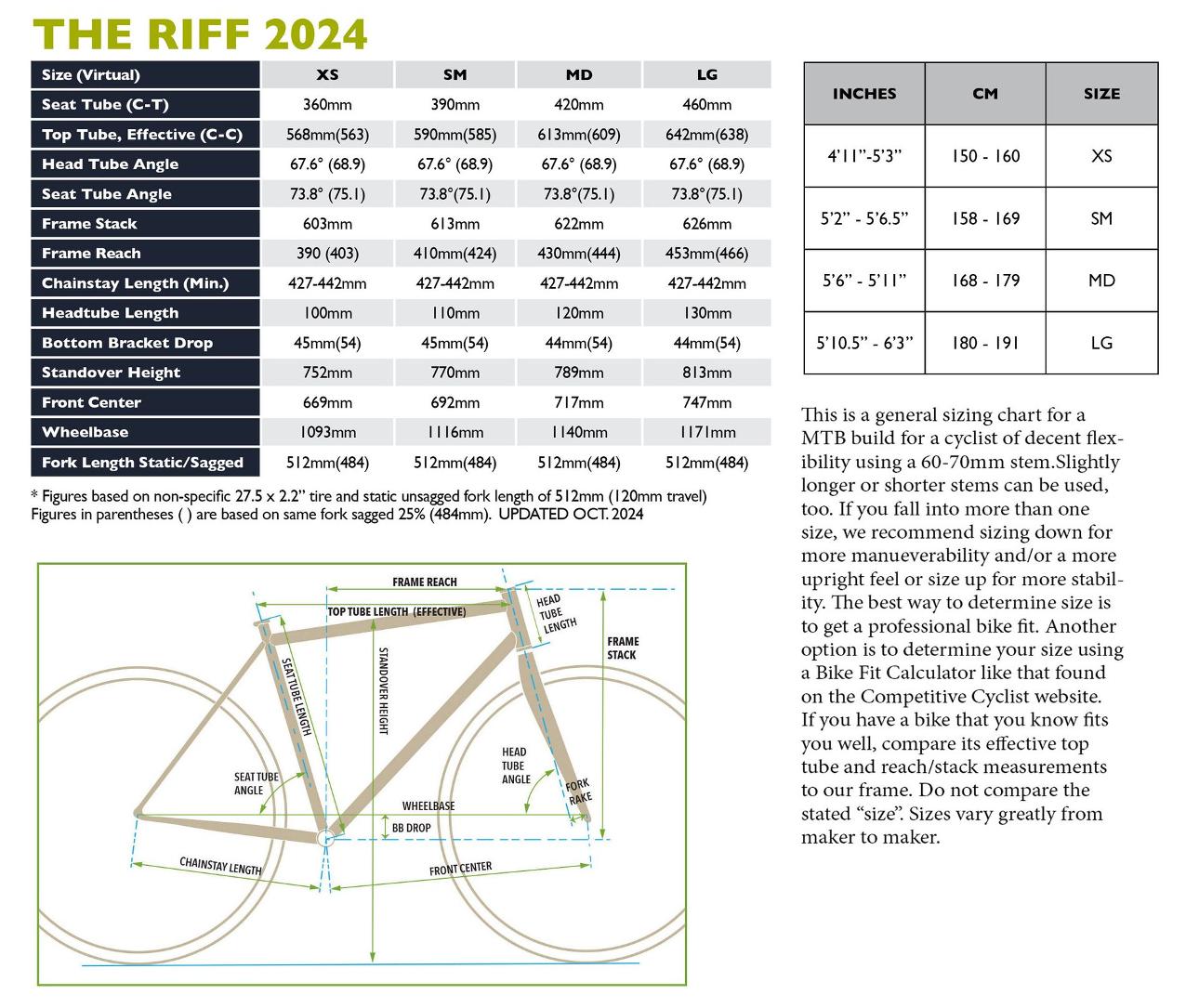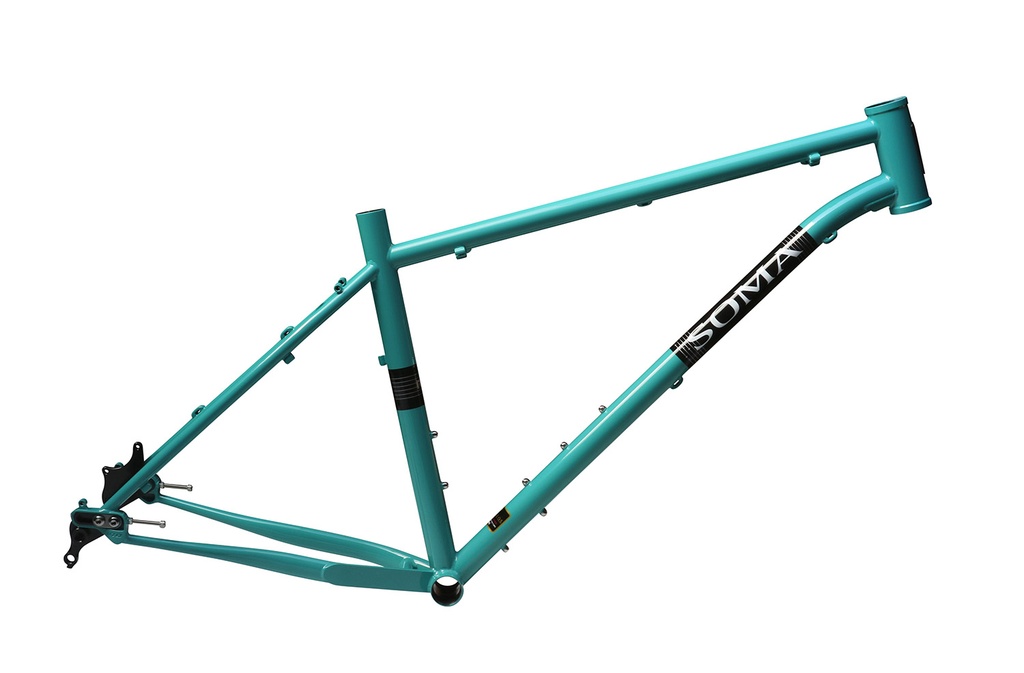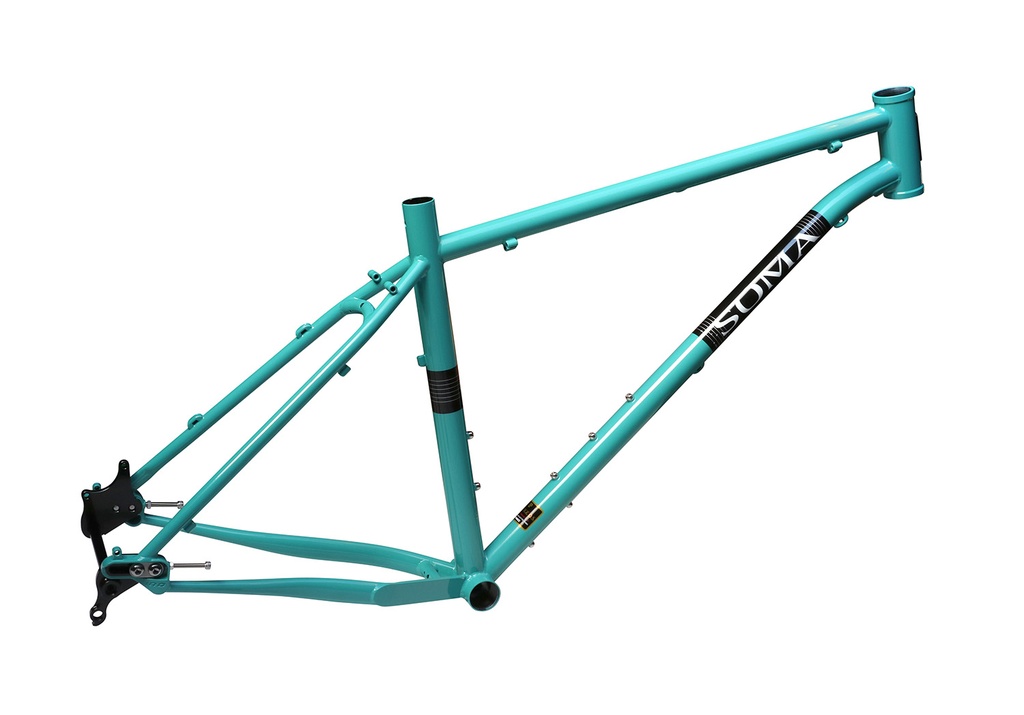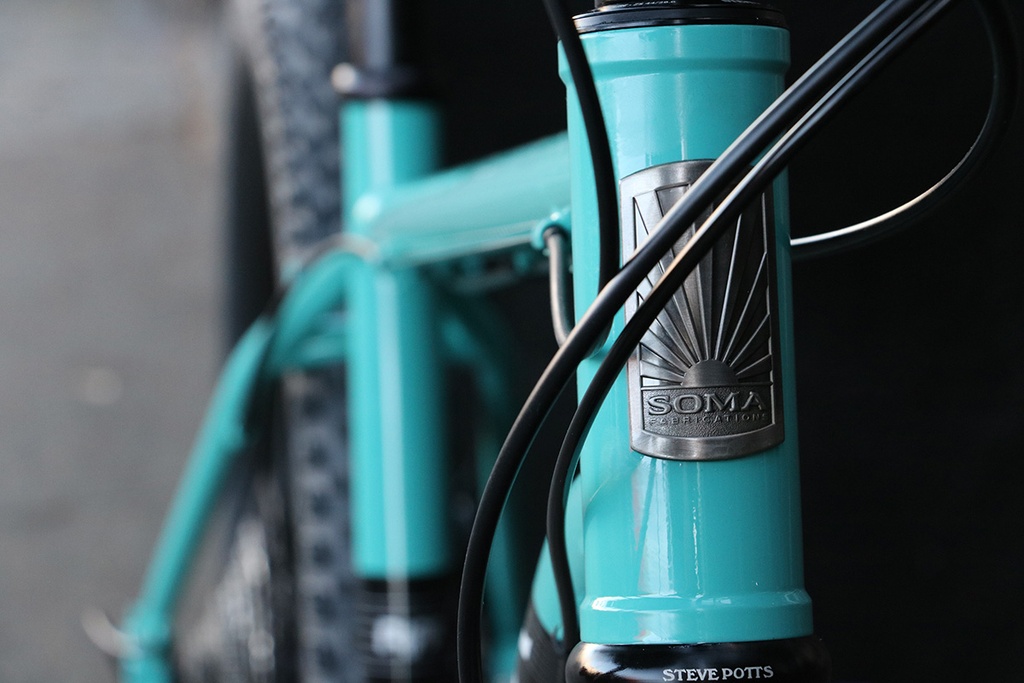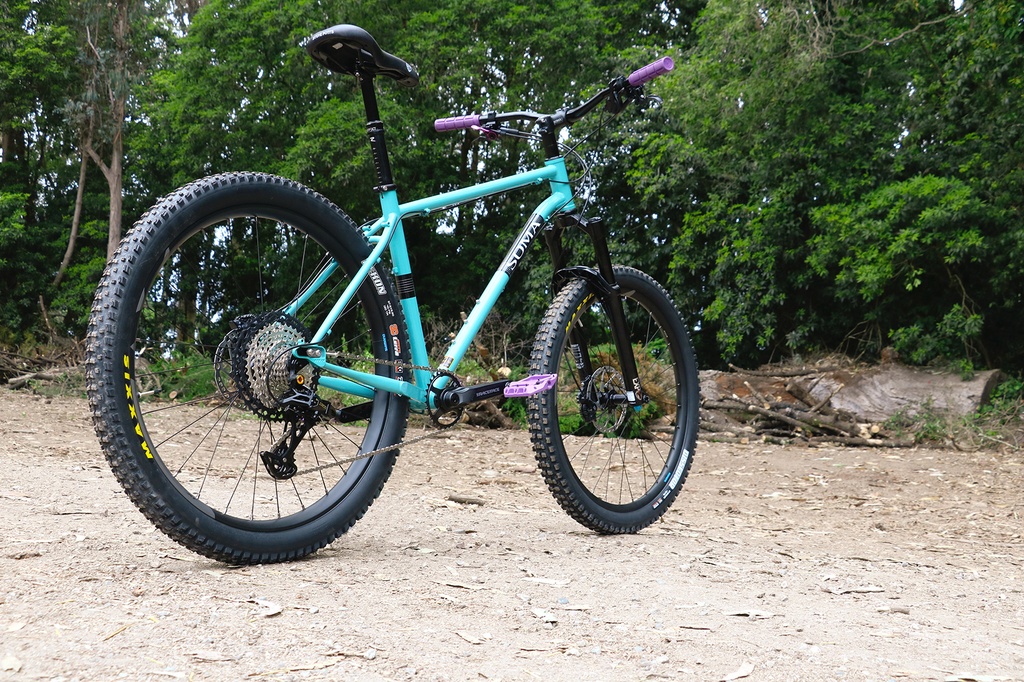Specifications:
- Bottom bracket shell: 73mm wide with English threading
- Headset type: Will take forks with 1-1/8" steerers using a ZeroStack 44 headset or forks with 1-1/8 - 1-1/2" tapered steerers using a ZS44 upper assembly and external cup (EC44) lower assembly
- Brakes: ISO mounts, 160mm, will fit 180mm rotor with proper Post Mount adapter
- Seatpost size: 31.6mm OD x 400+mm length
- Includes internal routing port at seat tube for dropper seatposts
- Max. dropper seatpost depth: XS: 195mm SM: 225mm MD: 255 LG: 270mm
- Seat collar size: 34.9mm (collar not included)
- Front derailleur type: Low clamp, top-pull (for folks with older front derailleurs); clamp diameter: 34.9mm
- Hub fit: 12 x 148mm thru-axle hubs. (Not backwards compatible by swapping inserts)
- Max. Chainring Clearance: 38-28t, 39t 1x (Boost chainline)
- Max Tire Fit: 27.5 x 2.8" (certain front derailleurs may reduce max. fit)
- Chainstay adjustment range: 427 - 445mm (ideal to keep dropout in the center or front of the slot)
- Max. weight including rider and cargo: 270 lbs.
How to care for Sliding Dropouts:
We recommend positioning the sliding insert in the middle or front half of the slot. Sliding it all way back puts extra stress on the frame.
When setting up make sure sliders are evenly aligned. Wheel will be crooked if dropouts are not aligned. Loose bolts here can be hazardous to riding.
Make sure the bolts holding the sliders are safely tightened at all times. Those bolts should be tightened to about 25nM.
Inspect inserts and wheel periodically for correct alignment. Try carbon paste on the slider contact areas, if you are experiencing slipping even though the bolts are adequately torqued.
Don't forget to tighten the nut against the dropout after setting the limit screw.
Can I fit a rear rack?
Yes, you can. The Juice has braze-ons on the dropout and seatstay to fit a rack. You may need a rack that is "disc-specific" so the left strut can clear the disc brake caliper and cables. Axiom, Topeak and others make racks to fit with disc brakes. Also make sure your rack is tall enough to clear 27.5" MTB tires before purchasing.
What are the benefits of 27.5" MTB Tires?
The 27.5" (aka 650b) is the most recently developed wheel size for mountain bike use. 26" became the primary size in the early days of mountain biking and 29" was developed around 2000. And the 27.5" option gained popularity 2013. The 26" tire size makes for a fast accelerating strong wheel for MTB. However its smaller size it is doesn't roll over rocks and through rough terrain as easily as a larger diameter wheel. It also doesn't maintain rolling momentum as long as a larger tire.
The 29" wheel especially with development of tires over 2.3" has changed the way people ride because of how it tackles technical descents and even rocky climbing more confidently than 26" wheels. Riders appreciate it how it rolls over rocks and depressions more easily. Deservedly most mountain bikes generally come with 29" wheel these days. The 27.5" was designed to be the "happy medium" between 26" and 29".
1) Those who feel 29ers were a little to unwieldy and slow to accelerate.
2) Those who liked the 29ers rolling advantage, but didn't want to give up the steering quickness of a 26" bike.
3) Those who want big wheel benefits, but find most 29er frames are a little too big for them.
4) Those who find 29er wheels a little heavy. 650b will be noticeably lighter.
5) With development of 27.5 x 2.6 and 2.8 (mid-fat tires) rolling advantage and traction rivals some 29" wheel options. However expect these mid-fat tire/wheel combinations to be heavier than 29" cross country MTB wheels.
